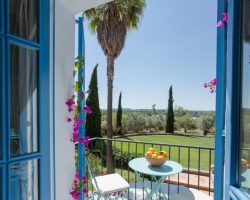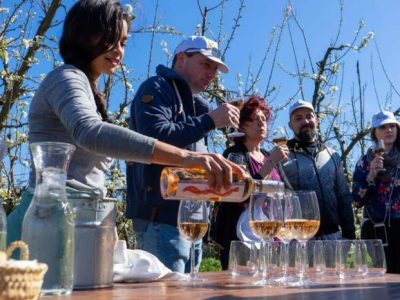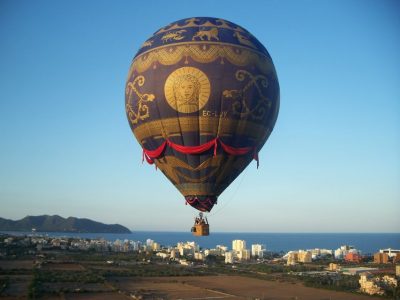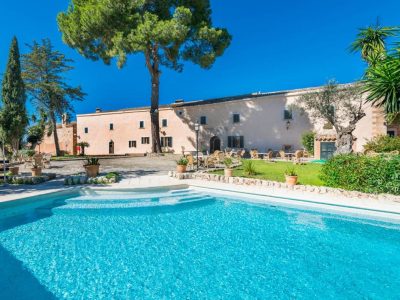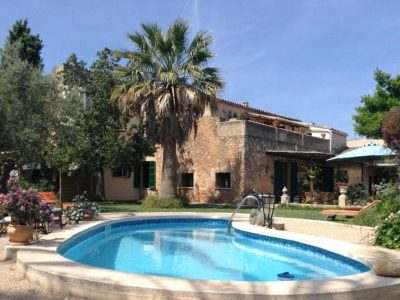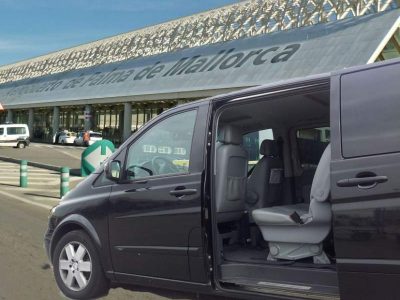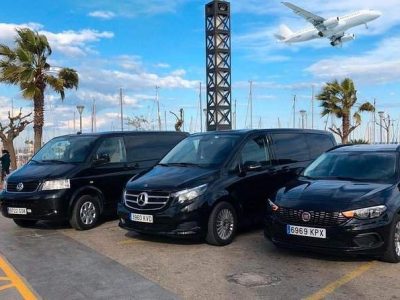Sencelles, Mallorca, Things to do and see, hotels, market
Any adventurer or history buff should consider the area around Sencelles carefully. The beautiful area around Sencelles has many beautiful and important attractions to offer for visitors who have a bit of time to explore them.
In autumn and winter, the flowers on the almond trees blossom and form the most beautiful white silk duvet over the fields, leaving the air with a special scent.
- This is where I want to go!
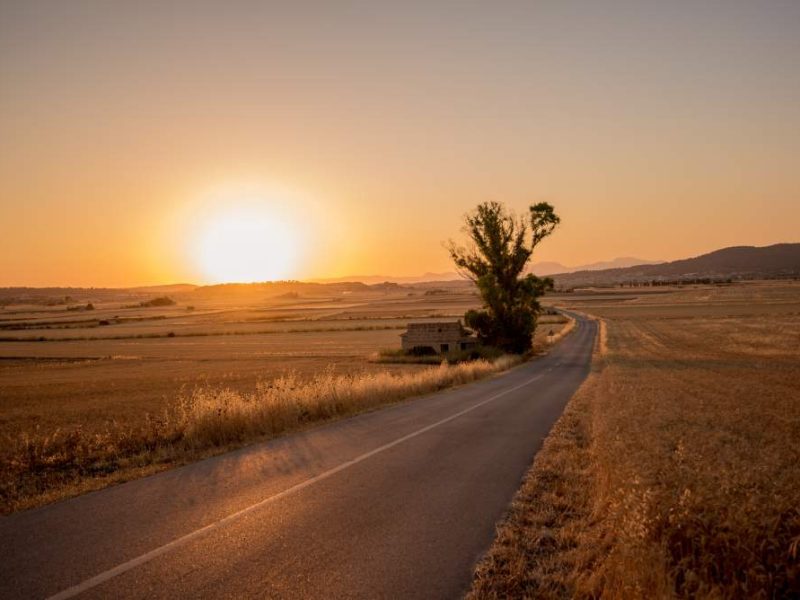
Why visit Sencelles
Things to do in Sencelles
PARISH CHURCH OF SANT PERE (SAINT PETER)
The heart and crown of Sencelles is undoubtedly the parish church of Saint Peter, a Baroque construction dating from the 17th and 19th centuries. Inside, you can find the unique altarpiece designed by Fray Albert Borguny Castelló, displaying Saint Peter sitting on a throne.
MONUMENT OF SISTER FRANCINAINA CIRER
Sister Francinaina Cirer was a famous daughter of Sencelles, whom was beatified by Pope John Paul II on October 1, 1989. She was devoted to and beloved in Sencelles, but also around Mallorca for the many curative and miraculous events attributed to her. Outside the parish church of Saint Peter, you can enjoy the beautiful monument dedicated to her.
THE RECTORY BUILDING
The rectory building is situated on the left-hand side of the parish church, a beautiful and almost symmetrical building facade. The building is particularly unique because of the arched gallery occupying the first floor of the facade, which truly make it stand out from the other building surrounding the church square.
CONVENTO DE LES GERMANES DE LA CARITAT
This building used to belong tio Sister Francinaina Cirer’s father. After his death in 1821, she restored the house and turned it into a place for pilgrims and others to pray. The word was soon heard all over, and 30 years later she established this small convent which she later donated to the church. Inside, you will find a small useum explaining the life of this woman whom was beloved all over Mallorca.
ARCHAEOLOGICAL ROUTE
Some of the most remarkable archaeological sites in the local area has been found between Sencelles and Costitx. These sites tells so much about the prehistory and the unique Talaiotic culture significant to Mallorca and Menorca, which is why an official archaeological route has been formed to allow tourists to visit the most emblematic sites. The route will take you to the Cova del Camp del Bisbe, an ancient burial site, the imposing Talaiot Son Fred, the remains of the ancient sanctuary of Son Corró, the settlement of Navetes des Turassot and the Talaiots de Can Xim.
PLACA SON MOREY
Hidden in the narrow streets of Sencelles somewhere behind the church, you will find the small square of Placa Son Morey. It is commonly believed that the houses surrounding this little square were part of the original farm from which the urban nucleus expanded. Also found at Placa Son Morey, is the great restaurant Celler Can Ramis serving delicious meals made from local products and with its own wine.
BINIALI
Biniali is the biggest of the many cute hamlets scattered around in the municipality of Sencelles, a place that offers a few interesting points of interest worth stopping by. One of the places worth seeing in Biniali, is the church of Sant Cristòfol erected the first time in the 17th century and later renovated and expanded in the 19th century. Inside, you can enjoy the organ built by engineer Josep Barceló Bunggaldier in 1892, as well as the relics of Sant Cristòfol, Santa Catalina Thomás and Sant Faustí. In the northwestern end of the village, you see the monument of the Immaculate Conception made in 1854. If you visit on July 10th, you can enjoy the festivities as the village celebrates its patron saint. Biniali is marked as a place of special cultural heritage, which makes it almost impossible to get permission to renovate or expand the current properties of the village. This has resulted in great depopulation, but also made the village even more of a sight. Some of the most impressive buildings are those of Can Grau, Sa Clastra and Son Raió. Also, the old mills of Can Xisco and Cas Moliner are worth stopping by.
RUBERTS
The small hamlet of Ruberts comprises a modest size of just about 20 houses. It is commonly believed that the name origins from the Catalan conquest and the knight Guillem de Ruberts from Tarragona, whom participated in the conquest. The Ruberts family owned various properties in the nearby area, the biggest being Son Jordà. The highlight of Ruberts is definitely the church of Carme, built between 1768 and 1770 and later renovated in the 20th century. The church was founded on initiative of rector Bartomeu Verd i Falcó and is celebrated each year in July. Some of the interesting buildings in Ruberts include the Can Tià, Son Durí, Can Pintat, s’Aigovés, sa Creu, s’Hostal and before mentioned Son Jordà found next to the church.
JORNETS
The little hamlet of Jornets was founded in the 18th century, when the original possessió of same name expanded due to the increased cultivation of vineyards. At a point, Jornets had more than 300 inhabitants, today it barely exceeds 50. There especially two things to pay attention to when visiting Jornets; the oratory of Sant Josep and the imposing old manor from which the urban nucleus expanded. The oratory was originally a private part of the old estate, but as the population grew it was made public. The interior is made up of a single ship and features an altarpiece of Sant Josep as well as some beautiful images of Sant Bartomeu, Ramón Llul and other saints. The second thing to notice in Jornets, is the estate of Jornets still belonging to the family of Planas Gual de Torrella. Above the entrance, you can see the beautiful coat of arms.
FAQ
Here are the best accommodation options in Sencelles:
Mancor de la Vall is located at the foothills of the Tramuntana, some 30 km (~18 miles) from Palma airport. The transfer time by car or taxi is about 25 minutes.
A taxi from the airport will cost about 35-40 euros.
If you prefer a more comfortable transfer, consider an air-conditioned private minibus. Book here
The weekly market in Sencelles is held every Saturday morning, starting around 8 am.
Market and Events in Sencelles
Weekly market in Sencelles
The weekly market in Sencelles is held on Saturdays in the main square of the village. The market is an excellent opportunity to sample some of the local ecological products and feel the wonderful atmosphere of one of the most traditional markets on the island. The market is a typical farmers and artisans market where you will find a great selection of local products like dried figs, almonds, oils, wines, cheeses, meats and bread. Moreover, there are many fine ceramics, pottery and tools for sale. What more is, the town hall does a lot to arrange festive inputs for the weekly market in order to attract more people.
Events and festivities in Sencelles
May
Fira de Sencelles i les Jornades Gastronòmiques
The annual spring fair is held in May in Sencelles, and dedicated to the world of gastronomy. During the fair, you can experience a wide array of fun and interesting activities, such as exhibitions, tastings, cooking shows, concerts, dance performances, talks, market and games. During the fair, typical products of Sencelles are highlighted and widely used in the cooking. There is usually a tapas route where many of the local bars participate by making special tapas using local products and offering them for just 1 euro.
June
Fira de jocs tradicionals mallorquins a Biniali
This is a great opportunity to to discover the small hamlet of Biniali and sample some local traditions. During this fair, you will see traditional games, Mallorcan music and dances, as well as traditional Mallorcan food.
July
Festes de Sant Cristòfol a Biniali
The small hamlet of Biniali celebrates Saint Cristofol on July 10th with a wide array of games, children’s activities, music, dancing and food. Moreover, exhibitions of cars, motorcycles and other vehicles is unique for this festival.
August
Festes de la Mare de Déu d’agost
The Summer festival of Sencelles begins in early August and includes two weeks of fun activities for all ages and testes.
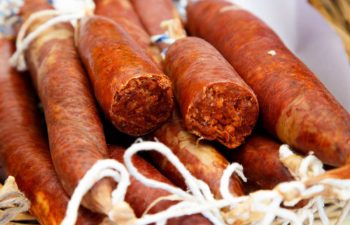
Support Local
Supporting local communities during your travels can have a profound impact. Stock up with groceries locally, stop in an artisan shop or enjoy a refreshment at a restaurant or bar. Now more than ever, these small businesses need support from travelers near and far.
Get to know the area of Sencelles
About the area of Sencelles
Sencelles is a municipality located in the region called “Pla de Mallorca”. Sencelles is one of the larger municipalities in this region, but also one of the most flat with the highest point at just 160 meters altitude. It covers a surface of 5,281 hectares and comprises a population of 3,195 inhabitants (2018).
Thanks to the central location in the heart of the island, Sencelles is easily reachable from most of the main roads and small country roads. The bordering municipalities are those of Algaida (southeast), Lloret de Vistalegre (east), Costitx (east), Inca (north), Binissalem (northwest), Consell (west) and Santa Eugènia (southwest).
Typical local products of Sencelles
- Figs
- Cereals
- Almods
- Grapes
History of Sencelles
The area of Sencelles has been inhabited by humans since ancient prehistoric times. Some of the archaeological sites that evidence early occupation are those of Son Morei, sa Teulera, Can Garau and Can Baldó, which goes back to the Pre-Talayotic period about 2,400 – 1,600 BC. The navetas villages such as Morelló Nou, Son Calussa, Son Fransoi and Son Caimari are great examples of the period between Pre-Talayotic and Talayotic periods known as “Naviforme” due to the ship shaped huts. From the Talayotic period (1,100 – 300 BC), the Talaiot Son Fred and Can Xim are undoubtedly the most significant excavations done in the municipality of Sencelles, both found just outside the village.
During Muslim occupation on the island (902-1232), the area was part of a bigger district or jurisdiction called “Juz’ d Qanarusa”, which also included the current municipalities of Binissalem, Lloseta, Alaró, Consell, Costitx, Sencelles, Santa Eugènia and Santa Maria del Camí. The area was most likely occupied by the Zanata/Zenata Berber tribe, a group that lived in farms and huts scattered all over the countryside.
Following the Catalan/Aragonese conquest of Mallorca (1229-1232), the king distributed the lands of the island among lords, counts, archbishops and knights which was documented in the Llibre de Repartiment (Book of Distribution). The district of Qanarusa was renamed to Canarossa and granted Gastón de Montcada, viscount of Bearn. The new Christian settlers were not late to replace all Islamic mosques with chapels to mark the new religious dominance. The first chapel that was built in this area was situated in Costitx and erected in 1236, however, already in 1246 a new chapel was built in Sencelles.
Mallorca became a kingdom, and in 1309, King Jaume II of Mallorca and his advisors came up with a document of ordinances that difined the villages of the island and which had the right to trade. One of the requirements was that a village had to have a least 100 inhabitants or houses. Sencelles was one of these villages. Moreover, to increase the revenue of the area, Costitx, Biniali, Cascanar and Ruberts was included in the same parish.
Plagues, droughts and corruption the following centuries limited the population growth remarkably. Especially corruption came to play a significant role in the history of Mallorca during the Middle Ages. The nobility, with strong bonds to the monarch, saw an opportunity to claim more lands than they actually owned. In the first half of the 15th century, a so-called “Cabreu” was to be created, in order to state who owned what, an early cadastre if you will. For various reasons, many small landowners and peasants did not have paper on their ownership of lands which the upper class and nobility took advantage of in collaboration with officials who wrote these cabreus, allowing for them to claim most of the lands and thereby demand rents and taxes from the peasants. All this led to an uprising against the nobility in 1450, known as “Revolta Forana” (Revolt of the Foreigners or Revolt of the Forals). For three years, there was battles and clashes all over the Mallorcan countryside until the conflict ended with interference from the monarch whom sent mercenaries to stop the peasants. The conflict resulted in massive debts to the peasants’ families which made it even more impossible to make a living because now almost all income had to be paid in taxes and penalties. The debt continued to grow year for year, as it became more difficult to make money as a small peasant. In the beginning of the 16th century, a small movement of twin communities began to form in all secrecy all over Spain as a result of public debts that suffocated people, the so-called “Comunetas”. In 1521, this movement started in Mallorca and became known as “La Germania”. La Germania started with a diplomatic approach appealing to the king and politicians to cancel the massive tax loads and public debt. But as the peaceful approach did not make quick progress, the leaders were killed by their own people in Castell de Bellver and a violent approach started to take place. For two years, Mallorca saw the worst blood shedding since the Catalan conquest in 1229-1232, with thousands of casualties. The conflict ended with the king sending 3,000 soldiers from the royal army to Alcúdia to come the nobility to rescue and fight the La Germania. In just a few months the skilled soldiers had slaughtered the amateur army of peasants. They hung their dead bodies from the trees on the main road between Alcúdia and Inca and cut their limbs into the trees, to exemplify what would happen to anyone not willing to surrender.
More serious droughts in the first half of the 18th century resulted in a shift in the agricultural activities in Sencelles, making the farmer bank on cultivation of dry soil like almonds, cattle, cereals and figs. However, in the 19th century, Sencelles benefited from the increasing demand for Mallorcan wines, which unfortunately did not last long as the terrifying phylloxera (wine plague) caused all vineyards to be burnt to the ground.
After a series of struggles and strides, Costitx and Sencelles finally parted in 1855, mostly in favor of Costitx. The political turbulence in Spain and the French invasion during the 19th century, resulted in many changes of where municipal power.
Today, Sencelles is still an agricultural area with its main activities centered around cereals, almonds and livestock. The municipality include the hamlets of Jornets, Biniali Cascanar Laià, Ruberts and Judí.
In regards to the name of the municipality, there are literally hundreds of theories about the origin of the name. Some etymologists suggests that the name derives from “Cent selles” (One hundred seals), other suggests that it derives from “Cent cel-les” (One hundred cells) and some believe that the name derives from the surname “Centselles”.
Agriculture is and has always been the predominant source of income in Sencelles. Sustainability and ecology are keywords in this municipality that does a lot to keep itself innovative.
Practical Info
Useful Numbers
Emergency: 112
National police: 091
Local police: 092
Guarda civil: 062
Fire: 080
Maritime emergencies: 900 202 202
Town Hall: +34 971 87 20 16
Public Transport
Bus lines: 304
Power Supply
220V



